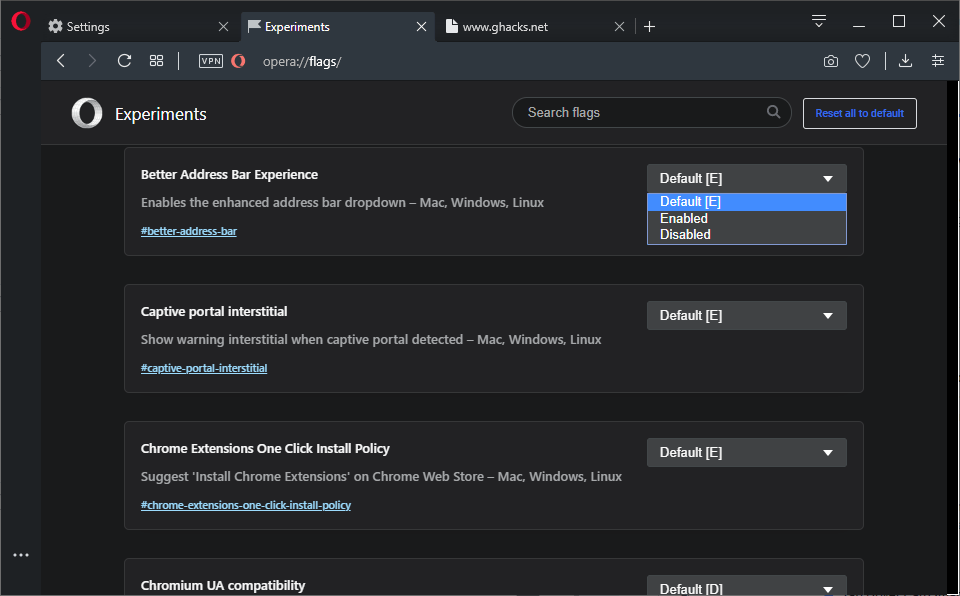by Martin Brinkmann on May 16, 2019 in Opera – No comments
I use a lot of web browsers but some of them less than others. I do have several versions of the Opera web browser on my test system but I use the browser only occasionally.
Some time ago, I noticed a great feature that Opera supports that other Chromium-based browsers, especially Google Chrome, don’t.
Opera supports an experimental flags page just like all other Chromium-based browsers. Just load opera://flags in the address bar to open the page.
The Chromium developers push new features and technologies there first for testing purposes; some land in the browser natively at one point in time, others may be removed or modified instead.
Many experiments come with multiple states that you may switch between: default, enabled, or disabled are the three most common states for flags. While it is clear what enabled or disabled do, it is not clear what default does as Google Chrome and most other Chromium-based browsers don’t reveal whether the flag is enabled or not when that option is selected or set.

The Opera web browser, on the other hand, displays the state of experiments when Default is set so that you know if a particular experiment is enabled or disabled when it is set to default.
The browser displays an E or a D next to Default; E means that the experiment is Enabled, D that it is disabled.
Without that, it is anyone’s guess whether a feature is enabled or not in the browser. I ask myself regularly whether a particular experiment is enabled in one of Chrome’s different versions or not. It is impossible to tell if the status is set to default.
While you can switch the status to Enabled or Disabled to make sure that it is set appropriately, adding the status to the Default level is certainly an improvement as you see on first glance whether that is necessary or not.
I checked different Google Chrome, Vivaldi, Microsoft Edge (Chromium-based), and Brave versions, and they all reveal no information about the default state.
Closing Words
Granted, displaying whether an experimental feature’s status is enabled or disabled if set to default is a minor thing in the grand scheme of things, but it is certainly useful if you browse the experiments regularly in your browser of choice.
The feature is supported by all versions of the Opera web browser including Opera Stable.
Now You: do you use the experimental flags page regularly?